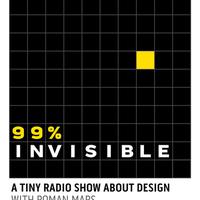99% Invisible-02- 99% 180
RM (Roman Mars): Check 1, 2, 3, 4..
RM: This is 99% Invisible. I'm Roman Mars RM: I want you to give your name and where we are.
HB (Henrick Bull): My name is Henrick Bull.
RM: Henrick Bull became president of the San Francisco chapter of the American Institute of Architects in 1968.
HB: And we're having this conversation at the base of the Transamerica Pyramid. RM: Construction of the Transamerica Pyramid began in 1969.
HB: Looking up into infinity, as the building comes to a point 850 feet above us. It's um, uh, this is not the best view of the building. RM: In the beginning, Henrick Bull and the Transamerica Pyramid did not get along. And the San Francisco AIA opposed its construction.
HB: Buildings should make sense. There's nothing about this building that makes sense. It's sort of a silly design. Dunce Cap. We thought that the pyramid shape is nothing but a, let's call it advertising, symbol. The top third of it is just plain air. In the era of modern architecture, building a couple of hundred feet of symbol, was just not considered proper or even moral.
RM: in an article in late 2009, San Francisco Chronicle urban design writer John King summarized several of the contemporary criticisms of the Transamerica Pyramid's proposed design. RM: “Putting it in San Francisco would be no less reprehensible than destroying the grand canyon. An inhuman creation. A second-class World's Fair Space Needle.” RM: Then assembly-man John Burton said the pyramid would “rape the skyline.”
RM: Jeez! Ugh my God!
RM: It seemed to violate the whole purpose of zoning and urban planning. The surrounding buildings were no more than three stories tall.
HB: This was definitely not a vision of that neighborhood.
RM: But over the course of forty years, something happened.
RM: Some people have never lost their hatred of the Transamerica Pyramid. But others, like Henrick Bull and the AIA of San Francisco, who recently voted it one of the top commercial buildings in the city, have done a complete 180. And it all seems to depend on where you're standing. HB: You could almost say the further you get away from it, the better it looks, but that'd be sort of nasty. RM: It's only a little nasty. And funny. And true.
HB: When the buliding was completed, many of us who had opposed it realized, that, you know, this is sort of a neat building in the skyline. Especially as a silhouette as the sun's going down. It's really quite graceful. The taller buildings since really are pretty dull. And this, God-knows, wasn't dull. I don't remember any discussion of what it's gonna look like looking down Columbus Avenue. Columbus Avenue is a diagonal street. And a broad street. And the Transamerica building is right at the end. I don't know if you know the term vanishing point in perspective. Everything goes in diagonals to a point. And in a way, you tilt that vanishing point up vertically, and there's the Transamerica building. It just is a big surprise. And had that been a conventional modern building of the time, it would have been a tragedy, really. I would say it's one of my favorite buildings. Not close up. How it meets the ground, I don't think ever really got solved. RM: The triangle shapes in the columns are awkward. And if you look up at the building from below, the spacing of the windows has to be pretty weird to accomodate that pyramid shape. But still:
RM: So a complete 180. I think that's really impressive. I think that shows strength of character on your part.
HB: [Laughs] I had the same conversation with John King.
RM: That's the aforementioned San Francisco Chronicle architecture critic whose article on this you should really go read. HB: He was quite surprised when I said that we didn't understand the problem and we were wrong. And he said “gosh,I don't think I remember an architect saying that before.” RM: 99% Invisible is produced by me, Roman Mars, with support from Lunar. It's a project of KALW and the American Institute of Architects in San Francisco, and the Center of Architecture and Design. Find out more at 99percentinvisible.org.

